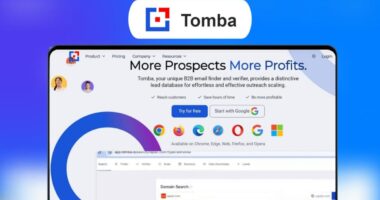Successful software marketing campaigns combine multiple key elements to drive product adoption and sales. Companies need a clear value proposition that addresses specific user problems, backed by data-driven strategies and analytics. Content marketing, including case studies and educational resources, helps establish credibility, while multi-channel distribution guarantees a broader reach. Social proof through customer testimonials and reviews builds trust. Measuring campaign performance through defined KPIs allows for continuous optimization. Understanding these fundamentals opens the door to mastering advanced marketing techniques.
Quick Overview
- Create compelling value propositions that highlight unique features and measurable benefits to differentiate your software from competitors.
- Implement data-driven marketing strategies using CRM tools and analytics to track performance and optimize campaign effectiveness.
- Develop engaging content across multiple channels, including educational resources, case studies, and technical documentation to build credibility.
- Leverage social proof through customer reviews, testimonials, and success stories to enhance brand trust and influence purchase decisions.
- Establish clear campaign metrics and KPIs while continuously monitoring and adapting strategies based on market trends and customer feedback.
Understanding Your Software’s Unique Value Proposition

At the heart of any successful software marketing campaign lies a crystal-clear understanding of the product’s unique value proposition (UVP). This fundamental element sets software apart from competitors and communicates why potential customers should choose it over alternatives.
To identify a software’s UVP, companies should examine:
- Core features that solve specific user problems
- Key differentiators from similar products
- Target audience pain points and needs
- Measurable benefits and outcomes
The UVP should focus on tangible results rather than technical specifications. For example, instead of highlighting “advanced encryption algorithms,” emphasize “protecting sensitive customer data with bank-level security.” Companies must regularly revisit and refine their UVP as market conditions change and new competitors emerge, ensuring it remains relevant and compelling to their target audience.
Tools like Marketing Cloud integration can help businesses effectively communicate their UVP across multiple channels while maintaining consistency in messaging.
Building a Data-Driven Marketing Strategy
Modern software marketing demands a methodical, data-driven approach to achieve measurable results and maximize return on investment. Success begins with establishing clear, measurable goals and key performance indicators (KPIs) that align with overall business objectives.
To implement this strategy effectively, organizations must first set up robust data collection systems, including CRM software and analytics tools. These systems enable marketers to track customer behavior, measure campaign performance, and make informed decisions. AI and machine learning capabilities enhance this process by providing predictive insights and automated optimization. Marketing teams can leverage cross-channel attribution capabilities to understand the complete customer journey across multiple touchpoints.
The strategy should emphasize personalization based on data insights, creating targeted campaigns that resonate with specific customer segments. Regular testing and optimization complete the cycle, with A/B testing and performance monitoring ensuring continuous improvement in campaign effectiveness and ROI.
Leveraging Content Marketing for Software Products

Building on the foundation of data-driven marketing, effective content marketing serves as a powerful engine for software product promotion and customer engagement. Companies create value through educational resources, technical documentation, and thought leadership pieces that address customer needs throughout their journey. Modern content marketing software provides a centralized hub for teams to seamlessly collaborate on and distribute marketing materials.
| Content Type | Purpose | Key Metrics |
|---|---|---|
| Blog Posts | Brand Awareness | Page Views, Time on Site |
| Whitepapers | Lead Generation | Downloads, Conversions |
| Video Tutorials | Customer Education | Watch Time, Completion Rate |
Success in software content marketing requires a strategic mix of formats and channels. Organizations implement SEO best practices while maintaining consistent publishing schedules across platforms. They track performance through analytics, measuring ROI through engagement metrics and conversion rates. By developing high-quality content that showcases product expertise and industry insights, software companies establish authority while nurturing prospects through the sales funnel.
Social Proof and User Testimonials in Software Marketing
Trust plays a pivotal role in software purchasing decisions, making social proof and user testimonials essential components of successful marketing strategies. Studies show that 92% of consumers hesitate to purchase software without reviews, while products with five or more reviews are 270% more likely to be purchased.
Companies can leverage various forms of social proof, from customer reviews to video testimonials, to build credibility and drive sales. Video testimonials have become increasingly important, with 79% of consumers watching them to evaluate software products. Companies should aim to maintain a minimum 3-star rating since most consumers won’t consider businesses rated lower.
Case studies and detailed success stories provide concrete evidence of software effectiveness. Additionally, social media mentions and user-generated content boost marketing effectiveness by 75%.
Multi-Channel Distribution and Promotional Tactics

Successful software companies increasingly recognize the power of multi-channel distribution strategies to maximize their market reach and sales potential. This thorough approach combines various platforms, including online stores, social media, mobile apps, and traditional retail channels, to create a seamless customer experience. Understanding and implementing robust inventory management systems ensures optimal stock levels and efficient fulfillment across all distribution channels.
Multi-channel distribution empowers software companies to expand reach and drive sales through diverse, integrated platforms that deliver seamless customer experiences.
Companies implementing multi-channel strategies see significant benefits:
- 87% wider audience reach when combining native and display ads
- 2-5x higher sales compared to single-channel approaches
- Enhanced brand visibility across multiple touchpoints
- Reduced risk through channel diversification
To effectively implement multi-channel distribution, software companies should:
- Analyze target markets and segment customers
- Develop channel-specific messaging while maintaining brand consistency
- Integrate robust data tracking systems
- Monitor performance across all platforms
- Adjust strategies based on customer engagement metrics
Measuring Campaign Success and ROI Optimization
Measuring the effectiveness of software marketing campaigns requires a systematic approach to data collection, analysis, and optimization. By establishing clear KPIs and leveraging analytics tools, companies can track performance across multiple channels and make data-driven decisions to improve ROI. Marketing teams must focus on both short-term metrics like conversion rates and long-term indicators such as customer lifetime value.
SMART objectives provide the foundation for effective campaign measurement and goal achievement in software marketing. Implement detailed tracking systems using Google Analytics, social media dashboards, and marketing automation tools. Monitor essential metrics including ROI, CTR, CPL, and conversion rates across all channels. Regular A/B testing and audience segmentation can optimize campaign elements and messaging.
Success measurement involves attribution modeling to understand the customer journey, unified reporting dashboards to consolidate data, and continuous optimization based on performance insights. This systematic approach confirms that marketing resources are allocated effectively while maximizing campaign impact.
Frequently Asked Questions
How Can Marketing Campaigns Effectively Target Users With Varying Technical Expertise Levels?
Marketing campaigns can effectively target users of different technical expertise levels through:
- Segmented content delivery – providing basic tutorials for beginners, intermediate how-to guides, and advanced technical documentation
- Channel optimization – using appropriate platforms like social media for novices and specialized forums for experts
- Customized messaging – adjusting language complexity and feature focus based on skill levels
- Progressive engagement – starting with core concepts and gradually introducing advanced capabilities as users develop expertise
What Are the Best Practices for Marketing Software During Beta Testing?
During beta testing, effective software marketing should focus on transparency and targeted communication. Companies should highlight the exclusive nature of beta access while being upfront about the testing phase.
Key practices include:
- Emphasizing early adopter benefits
- Documenting user success stories
- Providing regular progress updates
- Creating anticipation for full release
- Leveraging feedback to showcase responsiveness
Marketing messages should balance excitement about new features with clear expectations about the beta nature of the product.
Should Software Companies Adjust Marketing Strategies During Major Competitor Product Launches?
Companies should definitely adjust their marketing strategies during competitor product launches. Key adjustments include:
- Increasing advertising visibility to maintain market presence
- Highlighting unique product features and benefits
- Strengthening customer loyalty programs
- Adjusting pricing strategies if necessary
The focus should be on reinforcing brand value while monitoring competitor impact. Companies can also use this time to accelerate their own product improvements and launch targeted promotional campaigns to retain customer attention and market share.
When Is the Optimal Time to Start Marketing Before Software Release?
Unlike a farmer planting seeds months before harvest, software marketing requires careful timing but with distinct strategies. The most effective time to begin marketing is typically 3-6 months before release, with B2B products needing longer lead times than B2C applications.
This timeline allows companies to build anticipation, capture early interest through beta signups, and create meaningful content that resonates with potential users. Complex enterprise software may require up to 6 months, while simple consumer apps can manage with 3 months.
How Frequently Should Software Marketing Campaigns Be Refreshed to Maintain Audience Interest?
Marketing campaigns should be refreshed quarterly as a baseline, though specific factors may require more frequent updates.
Companies should monitor key performance metrics like click-through rates and engagement levels to determine best-case timing. For software products, major updates or feature releases typically trigger campaign refreshes.
Some brands find success with more frequent creative rotations, averaging every 10-14 days, while maintaining core messaging consistency to avoid audience confusion.
Conclusion
Like a well-oiled machine, successful software marketing campaigns require careful alignment of multiple components. From understanding the product’s unique value to implementing data-driven strategies across various channels, marketers must constantly measure and optimize their efforts. By combining compelling content, authentic social proof, and strategic distribution, companies can effectively showcase their software solutions and achieve measurable results in today’s competitive digital marketplace.








